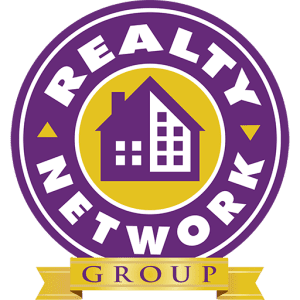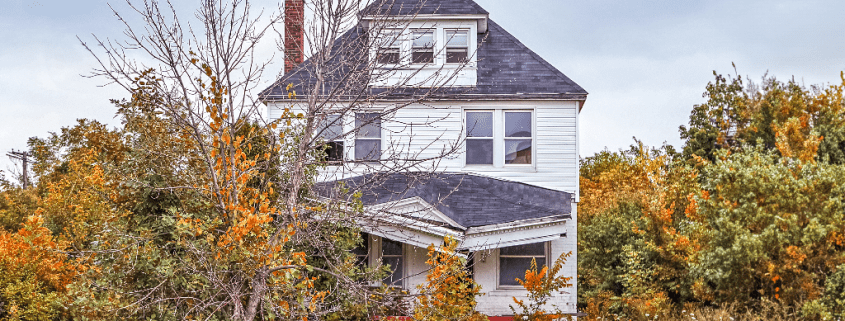Buying The Worst House On The Block
Affordability has become a concern in the real estate industry, but it isn’t a problem everywhere and it’s certainly not a headache for much of our region. And while affordability is more favorable in the Greater Scranton area, hesitation can capture many buyers who are eager to purchase. After all, mortgage rates are still elevated (even if they’ve come down since October) and inventory hasn’t sprung up to what we’d hoped it would have by now. It’s a time for some to get a little more creative in what exactly they’re looking for in a home.
Many homebuyers may overlook a house that needs work to bring it up to snuff, but purchasing the worst house in a desirable neighborhood can actually be a smart investment strategy. First, if you’re an investor who has an eye for flipping homes, purchasing this type of property could present a big opportunity. The lower price point may allow for a larger profit margin when renovating and reselling the property. Additionally, the potential for appreciation is higher in sought-after neighborhoods. In fact, there’s often excessive demand for rundown homes in desirable communities in Northeastern Pennsylvania. Furthermore, buying a fixer-upper can give buyers the freedom to customize their dream home while increasing its value. If the renovation costs are low-to-moderate and not too excessive, that’s a win-win. Finally, with this odd housing market still favoring sellers, buyers may have a better chance of finding a good deal on a property that needs TLC.
Buying the worst house on the block can be a smart approach, but as you may have guessed, it’s not for everyone. Experienced investors who have the time, resources and expertise to renovate and flip the property stand to make the most profit. However, more novice homebuyers with a limited budget and a willingness to take on a fixer-upper project can also benefit from this strategy. On the other hand, those who are risk-averse or lack the necessary skills to handle a major renovation may want to steer clear.
While buying the inferior house on the block may seem like a smart financial move, it’s important to understand the potential drawbacks before making a purchase. One of the biggest concerns is the amount of work and money needed to improve the property. This can be a significant and time-consuming undertaking, and unexpected issues may arise during the restoration process. This is why it could be beneficial to be handy, but also rely on the professionals for any jobs that might be over your head.
While this move can be a smart way to get into a desirable area at a lower cost, be aware of potential pitfalls. You may end up with a money pit that requires more repairs than you anticipated. It’s also important to weigh whether the surrounding homes are much nicer than your property. If this is the case, it will always be the odd one out. Don’t let the allure of a bargain blind you to the risks. Consult with a trusted real estate agent to help you navigate the potential issues and find the right home for you.
Additionally, the value of the property may not increase as much as expected even after improvements are completed. This is because the value of a home is often influenced by the value of surrounding properties, and it could be that other homes on the block are not well-maintained. Regardless, it’s imperative that you consult a real estate professional and preferably one who knows that neighborhood well. They’ll be able to assess the property and provide you with a competitive market analysis (CMA) to help you understand the value of the home after those proposed updates to it take effect.
If you’re not planning on living in the home, but instead would like to turn the property around as an investor, keeping your eye on its resale value is vital to making any profit on a future transaction. The number and cost of upgrades will certainly impact its resale value. This is why it’s important to understand and live by the five Ps, which you might already be familiar with: Proper Planning Prevents Poor Performance (and that’s resale performance!). Storyboarding your plans for renovation clearly helps with this preparation too.
While it can be a good tactic to buy the worst house on the block, in some cases, it’s not always the best option. Here are some other factors to consider:
Pros:
- Lower purchase price: Buying an inferior home in a specific community often means you can get it at a lower price than other homes in the area. This can make it a more affordable option for those on a budget.
- Potential for equity: If you’re willing to put in the time and effort to renew the home, you may be able to increase its value and build equity over time.
- Opportunity to customize: When you purchase a fixer-upper, you have the opportunity to customize it to your liking and make it your own.
Cons:
- Cost of renovation: Facelifting a home can be costly, and it’s important to factor in these expenses when considering purchasing a fixer-upper.
- Limited resale value: If you over-improve a home, you may not be able to recoup the costs when it comes time to sell.
- Locality concerns: If the neighborhood is in decline or has a high crime rate, purchasing the worst home in the area may not be a good game plan.
- Other pitfalls you might want to consider: Not relying on information that’s available at your fingertips, over-spending, etc.
In conclusion, buying the worst house in a neighborhood has the potential to be a profitable and rewarding investment if you’re willing to put in the time, effort (with proper planning and execution), and money to renovate it. However, it’s important to weigh the pros and cons and ponder any drawbacks before making the purchase. Decision makers should consider the surroundings, market conditions as well as other factors that could impact their bottom line.



